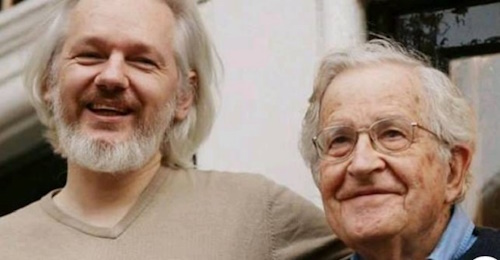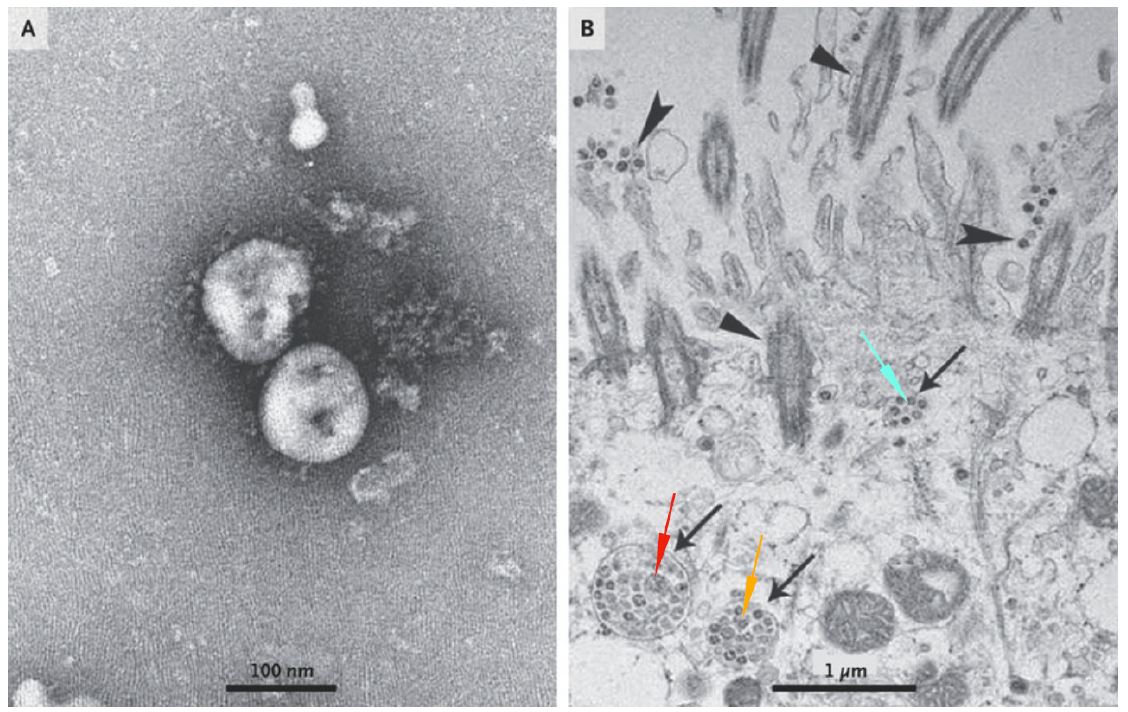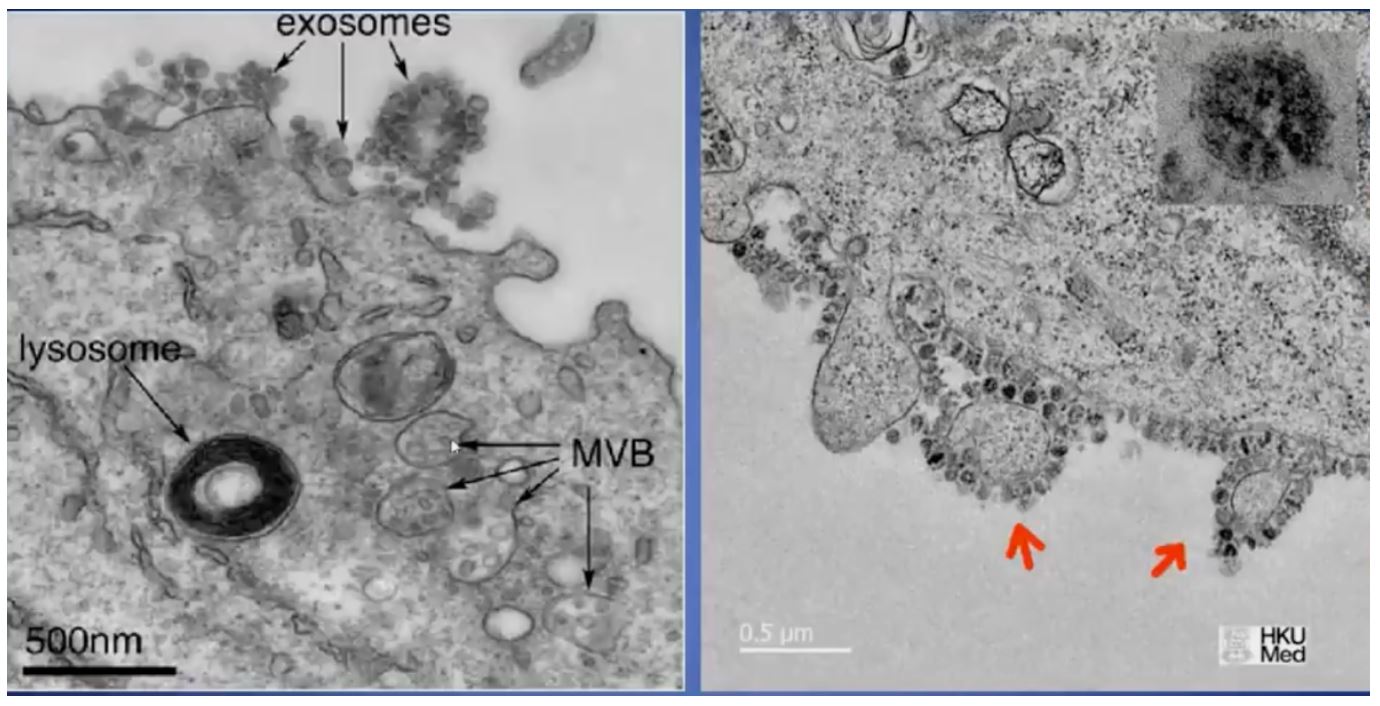by Ryan Matters, OffGuardian
February 1, 2022
In part 1 of this 3-part series (“The True Cost of Rockefeller Agriculture and the New Food Agenda“), we examined a recent Rockefeller report calling for “transformative change” in food production.
In part 2, we will examine the history of modern agribusiness, Bill Gates’ plan to centralize control of the world’s seed supply and the depopulation threat posed by gene drive technology.
Every day we consume food grown in the toxic chemicals produced by the global agriculture conglomerates, who, like their pharmaceutical compatriots, may be described as profit-hungry monstrosities, well versed in the art of killing.
As explained by Dr Vandana Shiva in her book Oneness vs the 1%, the agrichemical industry we know today is nothing more than a continuation of the toxic tools and poisons from the post World World 2 labs of IG Farben.
A century ago, the money and oil of the Robber Barons came together with the finances and toxic technologies from the labs of IG Farben to form the Toxic Cartel that evolved the tools of killing. This is how a century of ecocide and genocide through poisons and toxic chemicals began. Chemicals developed to kill people in Hitler’s concentration camps during WWII became the agrichemicals for industrial agriculture when the war ended. This industrial agriculture was then forced on people everywhere.”[1]
Interessengemeinschaft Farbenindustrie AG, more commonly knows as IG Farben was a German chemical and pharmaceutical giant formed in 1925. IG Farben was formed from a merger of 6 separate chemical companies – BASF, Bayer, Hoechst, Agfa, Chemische Fabrik Griesheim-Elektron, and Chemische Fabrik vorm.
Two years later in 1927, IG Farben partnered with Standard Oil (one of the largest oil refiners in the world, founded by John D. Rockefeller) to exchange patents and dominate economies on both sides of the Atlantic.
Standard Oil sent IG Farben their patents regarding the coal hydrogenation process and IG Farben reciprocated by offering up their own patents on the process of manufacturing synthetic rubber.
Some years after partnering with Standard Oil, IG Farben helped found the Auschwitz concentration camp, where they used Jewish prisoners as slave labour to produce synthetic rubber and liquid fuels.
At the end of the war, the Nuremberg War Criminal Tribunal convicted 24 IG Farben executives for crimes against humanity including mass murder and slavery. However, most of them were released within 2-6 years and immediately began consulting for American agritech companies.
IG Farben and its partner corporations, which included Bayer, were Hitler’s suppliers of Zyklon-B, a cyanide-based pesticide that was used to murder Jews in the extermination camps.
In 1948, IG Farben bigwig and Nazi party member, Fritz ter Meer, was convicted of “mass murder and enslavement” and sentenced to 7 years in prison. After his early release in 1950, he became chairman of the board of directors for Bayer, a position he held until 1964. What is today called the “Bayer Science & Education Foundation”, an initiative that awards scholarships to chemistry students, was originally set up to honour ter Meer.
After merging with Monsanto in a $62 billion dollar deal, Bayer became the largest agrichemical company in the world (The takeover was financed by European taxpayers without them even knowing about it).
Monsanto, an American agrichemical giant and mass-producer of genetically modified crops, was founded in 1901 by John Francis Queeny.
The company’s first product was the artificial sweetener, saccharin, which it sold to Coco-Cola. In 1977, the FDA proposed restricting the use of Saccharin on account of research suggesting its consumption was associated with an increased risk of cancer, primarily of the urinary bladder.
Not only is saccharin associated with an increased risk of cancer, but artificial sweeteners of all kinds have been linked with increased rates of diabetes, obesity, intestinal dysbiosis as well as an acceleration of atherosclerosis and ageing.
During World War 2, Monsanto contributed to research for the Manhattan project, which would eventually lead to the creation of the atomic bombs that were used to murder thousands of innocent people in Japan.
Around the same time, Monsanto became one of the leading manufacturers of polystyrene – a synthetic, non-biodegradable plastic whose production generates massive amounts of hazardous waste.
Moreover, styrene has been linked to adverse health effects in humans, including cancer. The styrene molecule is metabolized to styrene oxide, a highly reactive (and toxic) epoxide that can interact with DNA, causing harmful mutations.
Monsanto was also known for producing DDT, a highly toxic insecticide that played a serious role in the 20th-century polio epidemics.
Despite years of Monsanto propaganda, insisting that DDT was perfectly safe, by 1972 the research indicating its toxicity had mounted to the point that it was banned throughout the US. But this did not dissuade Monsanto from its goal of poisoning the world, for, in the 1960s, they became one of the principal producers of Agent Orange, a herbicide used for chemical warfare during the Vietnam war.
During the 10-year aerial bombardment that saw gallons of Age Orange rain from the Vietnamese skies, millions of innocent people were seriously poisoned, resulting in deaths, disabilities, birth defects, and widespread, irreversible environmental destruction.
Spina bifida, cerebral palsy, missing or deformed limbs and intellectual disabilities were some of the serious birth defects caused by Agent Orange that are still affecting Vietnamese children today. Agent Orange is also responsible for killing an estimated 300,000 US veterans.
These days, most people know Monsanto as the producer of glyphosate (the active ingredient in “Roundup”, a highly toxic herbicide promoted heavily around the world). Glyphosate has been implicated in the rise of food allergies, including “celiac disease”, a severe intolerance to gluten causing skin rashes, gut dysbiosis, nausea, diarrhoea, and depression.
Unsurprisingly, there have been virtually no studies conducted in the US, the largest consumer of GMO frankenfoods (Americans eat their bodyweight in GMOs each year), to assess glyphosate levels in human blood or urine.
However, a large study in Europe found quantifiable levels of glyphosate in the urine of nearly half of the participants, all of which were city dwellers who could only have been exposed to glyphosate through food consumption.
The merger of Bayer and Monsanto came alongside the merger of Dow Chemical and Dupont, as well as Syngenta and ChemChina. These mergers placed the vast majority of the global agriculture industry in the hands of just three corporations.
Through these various mergers and acquisitions, the biotech industry has become a modern-day IG Farben – functioning as a singular global chemical-military-industrial complex, the real owners of which are the investment firms like Vanguard and Blackrock.
The mergers are more like musical chairs, organised by the real owners, investment funds like Vanguard, Blackrock, Capital Group, Fidelity, State Street Global Advisors, Norges Bank Investment Management (NBIM), and others. This game of musical chairs has two objectives—to expand markets and shrink liability.”[1]
Three-fourths of the world’s GMO seeds come from Monsanto labs. Monsanto extracts royalties for its seeds and the high cost of the seed and chemicals push farmers into a debt trap.
As farmers fall deeper into debt, the wealth of Monsanto grows. There have been cases of GMO seeds blowing over onto the land of unsuspecting farmers who are then sued and forced to surrender their produce. Monsanto illegally introduced its Bt cotton in India in 1995, leading to an epidemic of suicide in regions along India’s cotton belt.
ROCKEFELLER AGRICULTURE
The role of the Rockefellers in the rise of chemical farming and GMOs is not to be understated, for they were instrumental in the promotion of new agricultural technologies that resulted in modern “agribusiness”.
This began during the early days of World War 2 when the Rockefeller Foundation funded a secret policy group called the War and Peace Study Group of the New York Council on Foreign Relations. The purpose of this group was to shape the US post-war economy in order for it to replace the British Empire as the new global superpower[2].
It was within this context that John D. Rockefeller III was pursuing his eugenics agenda through the American Eugenics Society as well as his Population Council. At the same time, his brother Nelson was seeking new methods to increase worldwide food production.
One of the post-war goals of the War and Peace Study Group was for the US to dominate global agriculture and food production. This led to the infamous “green revolution” promoted in India and other developing countries in South America and parts of Asia.
One of the results of this increased agricultural efficiency was the mass exodus of peasants from the farmlands to the city slums where they were exploited for cheap labour by various US multinational companies[3].
This elite propensity for experimenting on more “primitive” communities represents the occult contempt for the “lower” orders of society.
Nowhere is this contempt more obvious than in the “philanthropy” of Bill Gates who, in 2019, unleashed genetically modified mosquitos in Burkina Faso under the fallacious pretext of “fighting malaria”. But more on Gates and his gene drive technology later.
Before moving on, it’s important to consider the parallels between eugenics and genetics, which, some researchers have branded the “new eugenics”. In the 1980s, researchers at the Rockefeller Foundation were determined to map the structure of the gene and, according to Philip Regal, the ultimate motivation behind this quest was “to correct social and moral problems including crime, poverty, hunger and political instability”.
As William Engdahl notes, research into genetics was carried forward by generous grants given to up and coming scientists, eager to make a name for themselves in a new and exciting field:
Many of the younger generation of biologists and scientists receiving Rockefeller research grants were blissfully unaware that eugenics and genetics were in any way related. They simply scrambled for scarce research dollars, and the dollars all too often had the name and strings of the Rockefeller Foundation attached.”[3]
Perhaps a fuller understanding of the Rockefeller pursuits in eugenics and genetics is gained by seeing the two as separate but related parts of a materialist agenda mirroring the alchemical pursuit for the transformation of man. Regal describes this alchemical pursuit as follows:
From the perspective of a theory reductionist, it was logical that social problems would reduce to simple biological problems that could be corrected through chemical manipulations of soils, brains, and genes. Thus the Rockefeller Foundation made a major commitment to using its connections and resources to promote a philosophy of eugenics.”[3]
In relation to this Rockefeller initiative, Regal goes on to mention Francis Bacon’s New Atlantis, a highly esoteric work that speaks of a hidden scientific elite with the goal of “enlarging of the bounds of human empire, to the effecting of all things possible”.
In Bacon’s work, “Atlantis” refers to America. Therefore, as noted by Dr Farrell and Dr. De Hart in their book “Transhumanism: A Grimoire of Alchemical Agendas”, according to Bacon, America “was to become the great laboratory for a grand esoteric experiment being run by a hidden and ancient elite.”[2]
Now let us return to the history of Rockefeller involvement in global agriculture…
It was in 1941 when Nelson Rockefeller and then US vice president, Henry Wallace sent a group to Mexico to meet with the Mexican government regarding the possibility of increasing food production. Noteworthy is that Henry Wallace was a high-ranking Freemason who convinced fellow Freemason, President Franklin D. Roosevelt to place the occult symbol of the uncapped pyramid and the eye of Horus on the US one-dollar bill[2].
The Rockefeller take over of global agriculture involved the promotion and spreading of genetically modified crops around the world. But in order for their GMOs to catch on, the Rockefellers needed to manipulate the perceptions of scientists engaged in genetic and environmental research.
They did this by deploying US university professors to select Asian universities to train a new generation of scientists. The best of these graduates were then sent to the US to pursue a doctorate in agricultural sciences, ensuring they were wholly indoctrinated into the Rockefeller outlook on agriculture and food production[2].
In the 1970s, the Rockefeller Foundation, with aid from the World Bank, FAO and UNDP, established a worldwide network of agricultural research centres, called CGIAR (“Consultative Group for International Agricultural Research”). The alleged goal behind the creation of CGIAR was to coordinate global agricultural research in an effort to reduce poverty and improve food security in developing countries.
Thus, the Rockefellers constructed a global network of scientists and institutions ready to play their part as ambassadors of this new agricultural paradigm. This had the result of “socially engineering” a scientific culture that promoted the use of genetically modified crops and new agriculture technologies.
The Rockefellers went on to invest hundreds of millions of dollars into genetic research that would further the development of GMO crops and increase their uptake around the world. Thanks to patent law, this transformed many a humble farmer into a captured slave, indebted to big agribusiness conglomerates.
A similar tactic has been used in Africa where the Gates-funded Cornell Alliance for Science (CAS) trained 112 African scientists to fight for GMOs and corporate involvement in farming.
The CAS is linked to the Open Forum on Agriculture Biotechnology (OFAB) which in turn is an offshoot of the African Agriculture Technology Foundation (AATF), an organization founded by the Rockefellers.
Perhaps the biggest boon for the agribusiness industry came n 1986, when US Vice President Herbert Bush hosted a “special White House strategy meeting”, inviting executives from Monsanto to discuss plans relating to the deregulation of agritechnologies.
This meeting resulted in the adoption of “substantial equivalence” – the erroneous notion that agronomy (traditional methods of animal/plant breeding) was “substantially equivalent” to genetic modification – thereby evading the increasing pressure from scientists calling for more rigorous testing of GMO crops[3].
Thanks to the Rockefellers, the US people are now the largest consumers of GMO foods. In fact, the research literature clearly indicates that large populations around the world have been forced to consume GMO toxins despite a complete lack of any reliable safety data, and overwhelming evidence to suggest that such toxins cause biological harm.
Animal studies have demonstrated that exposure to GMO toxins causes an increase in inflammatory cytokines associated with nearly all human diseases. If these changes also occur in humans then this would go some way towards explaining the massive increase in autoimmunity, autism, and other chronic and allergic diseases[4].
Both the WHO and the American Medical Association (AMA), which, ironically, claims to “promote the art and science of medicine and the betterment of public health” have been utterly complicit in allowing this global experiment to take place[4].
Though this shouldn’t come as a surprise considering the profound early influence that the Rockefeller Foundation had on the AMA and their role in the capture of American medical education.
This began with the publishing of the “Flexner Report” in 1908 which lay the groundwork for a reformation of medical education, encouraging the acceptance of a drug-based curriculum. Universities that failed to conform to the tenets of drug-based medicine and research were deprived of their funding and eventually forced to close down[5].
BILL GATES AND THE AGENDA FOR CONTROL
Since 2003, the Gates Foundation has poured nearly $6 billion into global agriculture. In 2017, Gates became the largest funder of CGIAR, which now holds the largest and most widely used collections of seed crops in the world. Gates’ interest in world agriculture serves two purposes:
- To centralize control of the world’s seeds supply and,
- To shift global farming towards a reliance on technology and external inputs, sold to farmers by the agritech conglomerates in which he holds stock.
According to Navdanya:
By far the largest funder of the CGIAR, Gates has successfully accelerated the transfer of research and seeds from scientific research institutions to commodity-based corporations, centralizing and facilitating the pirating of intellectual property and seed monopolies through intellectual property laws and seed regulations.”
In 2019, CGIAR began a process of reformation with the aim of consolidating its 15 cooperating centres into a single, legal entity, presided over by an international board.
The impetus for this restructuring came from the organization’s largest funders, notably the Gates Foundation. CGIAR claims the change is necessary because,
“A unified and integrated CGIAR will be much better equipped to tackle threats to food, nutrition and water security posed by climate change.”
The recommendation for this dramatic restructuring came from CGIAR’s System Reference Group (SRG), at the time co-chaired by Tony Cavalieri, Senior Program Officer at the Gates Foundation, and Marco Ferroni, ex-head of the Syngenta Foundation.
In other words, the CGIAR reformation will result in greater centralization of the global agriculture industry, with a greater blurring of lines between the private and public sectors.
In direct contradiction to Gates’ claims of helping smallholder farmers, a detailed analysis of the grants given by the Gates Foundation revealed that the majority went to research institutes and not farmers.
These grants were also directed towards lobbying groups that pressure government to institute policies that favour big agribusiness such as introducing laws allowing the privatization of seeds.
One of Gates’ primary objectives is to open up the African market and institute a corporate takeover of the region. In aid of this goal, he founded AGRA (The Alliance for a Green Revolution in Africa) in 2006. Through the promotion of commercial seeds and inorganic fertilizers, AGRA set out to double crop productivity, increase incomes and halve food insecurity by 2020.
In July 2020, Timothy Wise of Tufts University published an analysis of AGRA’s impact in Africa. His research found that not only did AGRA fail in reaching a significant number of smallholder farmers (a finding that is consistent with the analysis on Gates Foundation grants, the majority of which are directed towards scientists, not farmers), but that undernourishment increased by a startling 30% in AGRA countries.
Overall staple crop yields have grown only 18% over 12 years. Meanwhile, undernourishment (as measured by the FAO) has increased 30% in AGRA countries. These poor indicators of performance suggest that AGRA and its funders should change course.”
Many Africans are now beginning to question Gates’ involvement in the region, calling for the end of his industrial agriculture model. In September 2020, SAFCEI (Southern African Faith Communities’ Environment Institute) sent an open letter to the Bill and Melinda Gates Foundation warning that the Foundation’s current approach to food security will do more harm than good. The letter states that
The Gates Foundation promotes a model of industrial monoculture farming and food processing that is not sustaining our people”.
In June 2021, AFSA (The Alliance for Food Sovereignty in Africa) wrote to AGRA’s major institutional donors calling for them to shift their support away from big agribusiness and towards sustainable, agroecological approaches to farming.
Together, AFSA’s member network represents millions of African citizens across 50 countries. AFSA stated that they received very few responses to their letter and that none could provide any evidence that AGRA had achieved any of its stated aims.
In the shadow of AGRA’s failure, in 2020, the Gates Foundation launched “Gates Ag One”, a subsidiary of the Gates Foundation. The alleged aim of Gates Ag One is to “Advance innovations that improve agricultural outcomes for smallholder farmers”.
By “innovations”, they evidently mean the promotion of GMOs as Gates Ag One backs multiple research labs pursuing genetic engineering technologies aimed at increasing yields.
Gates Ag One is headed up by Joe Cornelius, a former executive at Bayer, and Al Gallegos, who has previously held positions at both DuPont and Monsanto.
Thus “Gates Ag One”, though claiming to empower small farmers will actually lead to the further enrichment of corporations. As Navdanya writes:
They are hoping to artificially accelerate the process of introducing “new technologies” to farmers through increased investment and public and private partnerships while having total freedom in their business model as a separate entity to the Bill and Melinda Gates Foundation.”
The rhetoric expounded by Gates and his posse of corporate backers is that smallholder farmers are unproductive and unable to provide for a rapidly evolving world. Gates claims that what they really need is “new digital tools and technologies”.
However, considering the failure of the Green Revolution, the soil crisis and the widespread health effects of chemical inputs, is that really true? Or is Gates Ag One simply the latest attempt to bring world agriculture firmly under the control of Big Agribusiness?
GENE DRIVE ORGANISMS AND SCULPTING EVOLUTION
The Gates Foundation, along with US military group DARPA, has been the driving force behind the development of gene drive technology. Gates’ funding of gene drive technology began in 2005 with an $8.5 million grant given to Austin Burt and Andrea Chrisanti, biologists working at Imperial College, London.
This line of development eventually led to the invention of CRISPR in 2015, a genetic engineering tool that allows scientists to cut, insert and replace genes in a DNA sequence. According to a report by ETC Group (Action Group on Erosion, Technology and Concentration),
Gene drive organisms are created by genetically engineering a living organism with a particular trait, and then modifying the organism’s reproductive system in order to always force the modified gene onto future generations, spreading the trait throughout the entire population.”
As mentioned earlier in this article, one of Gates’ initiatives led to the release of genetically modified mosquitos in Burkina Faso. However, this was but the first phase in a long-term project, the third phase of which is the release of GDO mosquitos (modified via gene drive technology). ETC Group explains the significance of this [emphasis added]:
…A a gene drive is designed to interfere with the fertility of the mosquito: essential genes for fertility would be removed, preventing the mosquitoes from having female offspring or from having offspring altogether. These modified mosquitoes would then pass on their genes to a high percentage of their offspring, spreading auto-extinction genes throughout the population. In time, the entire species would in effect be completely eliminated.”
Following calls in 2016 for a global moratorium on the use of gene drive technology, the Gates Foundation paid $1.6 million to Emerging Ag (a private PR firm) to coordinate the push-back against proponents of the moratorium.
Emerging Ag recruited and coordinated over 65 experts, including a Gates Foundation senior official, a DARPA (Defense Advanced Research Project Agency) official, and government and university scientists, in an attempt to flood the official UN process with their coordinated inputs.”
Another group developing gene drive technology is the Sculpting Evolution group, run out of the Gates-funded MIT Media Lab, the same institution that received donations from Jeffery Epstein, and the same institution that houses Robert Langer, co-founder of the controversial biotech company, and Covid-19 “vaccine” manufacturer, Moderna.
The leader of Sculpting Evolution is Kevin Esvelt, one of the pioneers of CRISPR and (allegedly) the first person to identify the potential for gene drive systems to alter wild populations of organisms.
Esvelt’s lab seeks to apply “robotics and machine learning to evolve new molecular tools and techniques”. Another of their aims is to “Work with the guidance of interested communities to safely and humanely edit wild populations and ecosystems”.
The Sculpting Evolution Group also advises governments on “pressing issues of biodefense”.
Our challenge is to prevent the immense power of biotechnology from being misused. Historical pandemics killed tens of millions of people, and engineered agents could be even more destructive.”
One of the ways Sculpting Evolution proposes thwarting future pandemics or bioweapon attacks is by the construction of a “Global Nucleic Acid Observatory” (NAO) to “monitor humanity and the environment for any and all biological threats”. The group claims that by continual genomic testing at sites around the world, the “NAO could detect any virus or invasive organism undergoing exponential growth”.
In support of this radical proposal, the group references a case study from Israel [emphasis added]:
In 2013, Israel’s poliovirus-specific environmental monitoring program detected a nascent outbreak in wastewater samples from the town of Rahat using plaque assays and swiftly initiated mass oral vaccination, eliminating the virus before even a single child came down with paralytic symptoms”.
The disturbing nature of such a system thus becomes immediately apparent: governments would be able to initiate vaccination programs and institute other pandemic measures without the need for, or proof of, an actual threat, only the claimed “detection” of one. This begs the all-important question: who would decide when a “threat” is detected, and on what basis?
While virologists expound on the dangers of zoonotic coronaviruses and climate scientists rage on about the evils of carbon dioxide, the real environmental crises go largely unnoticed. And perhaps that is the point. We will explore these other crises – crises that threaten our very existence as a species – in part 3.
To be continued…
You can read part one here.
REFERENCES
[1] Shiva, V., Shiva, K. Oneness vs the 1%. 2018.[back][back]
[2] Farrell, P., J., de Hart, D., S. Transhumanism: A Grimoire of Alchemical Agendas. 2011.[back][back][back][back]
[3] Engdahl, W. Seeds of Destruction. 2007.[back][back][back][back]
[4] Vasquez, A. Inflammation Mastery (4th ed). 2016.[back][back]
[5] Griffin, G., E. World Without Cancer, the Story of Vitamin B17. 2001.back
Ryan Matters is a writer and free thinker from South Africa. After a life-changing period of illness, he began to question mainstream medicine, science and the true meaning of what it is to be alive. Some of his writings can be found at newbraveworld.org, you can also follow him on Twitter and Gab.
Connect with OffGuardian






